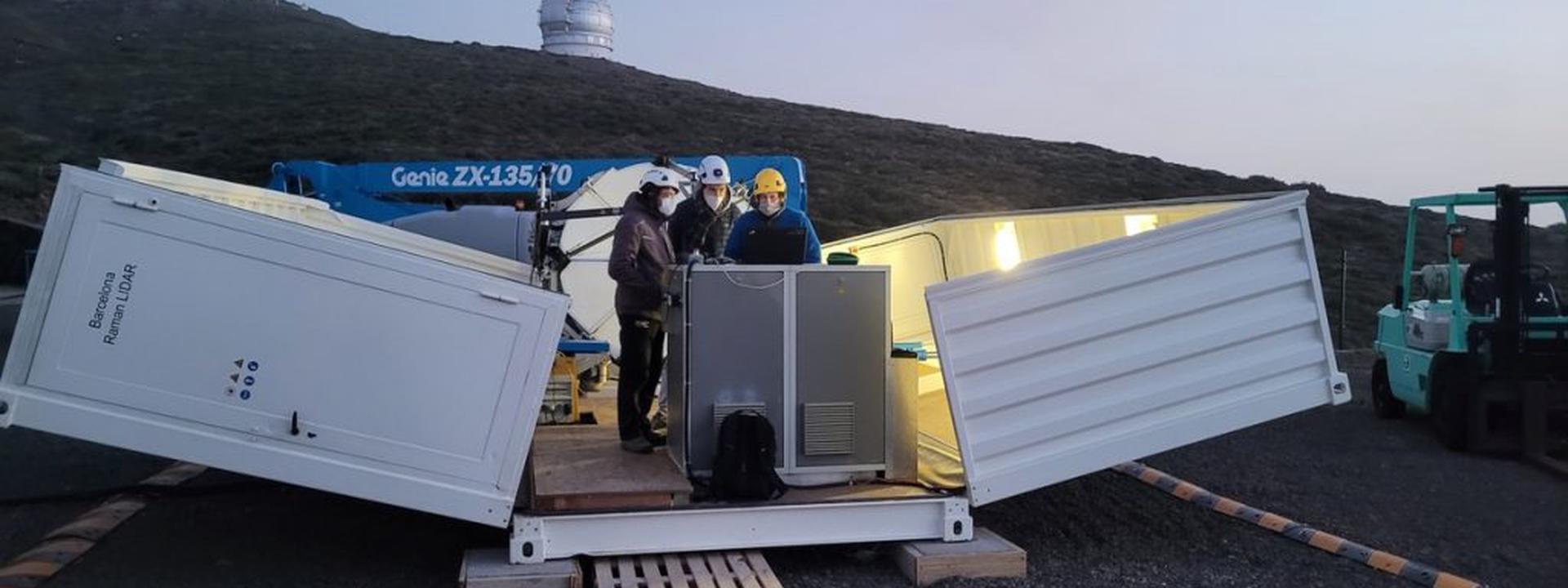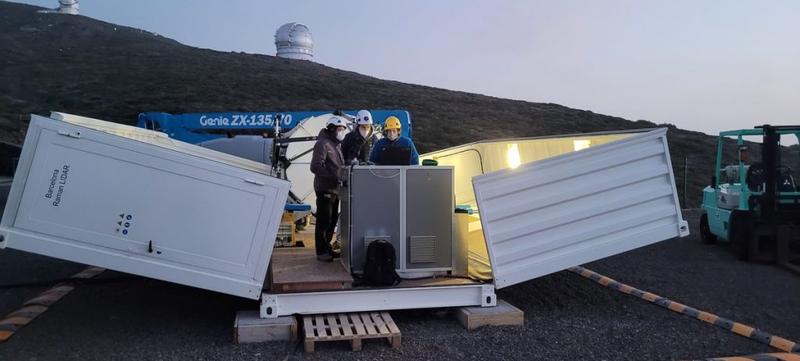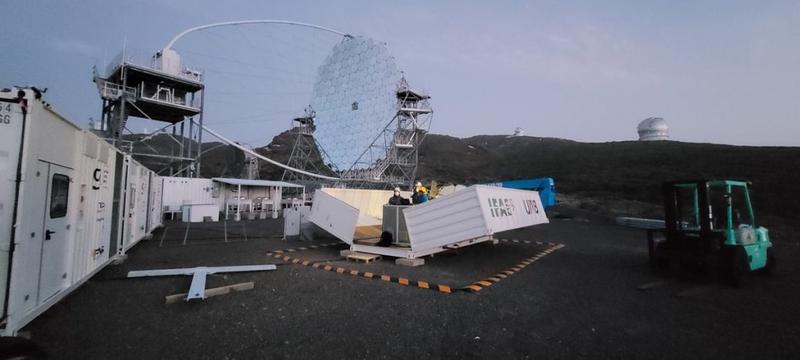
Instrumentation R&D
Raman LIDAR Pathfinder for CTA
LIDAR
Raman LIDAR Pathfinder for CTA
The CTA pathfinder LIDAR, built in Barcelona, was installed at the CTA-North site inside the LST-1 construction area from mid-February 2021 to April 2022 for a successful year-long testing period. The LIDAR will play a fundamental role in characterizing the atmospheric properties and calibrating the data acquired by the CTA telescopes. Back to Barcelona, updates and improvements are being carried out based on the data collected. A final instrument based on the pathfinder will be installed at CTA-North to continue gathering important atmospheric data for scientific research.

A LIDAR is a remote sensing instrument used to measure the vertical profiles of aerosol and water vapor within the atmosphere. It works similarly to a RADAR (LIDAR stands for Light Detection And Ranging) but at much shorter visible or ultraviolet wavelengths rather than radio. It features a powerful laser and a telescope: the laser shoots a series of meter-long pulses into the atmosphere, each with the power of several megawatts, while the telescope collects the radiation backscattered by various atmospheric components.
From the time required for light to travel back to the telescope, it is possible to derive the exact content of aerosol and water vapor at each altitude. Using this information, vertical profiles can be created for both components to determine the so-called “extinction coefficient” – a measure of how radiation coming from sky sources is altered as it passes through the atmosphere, a parameter of paramount importance for calibrating CTA telescopes.

The Barcelona Raman LIDAR pathfinder for CTA-North is a joint project between CTA members from IFAE-BIST (Institute of High Energy Physics – Barcelona Institute of Science and Technology), UAB & IEEC-CERES (Autonomous University of Barcelona & Institute of Space Studies of Catalonia-Center of Space Studies and Research), Center of Astrophysics and Cosmology of the University of Nova Gorica and Department of Physics and Astronomy of the University of Padova. Paolo Calisse, the CTA-North Site Manager, serves as the on-site project manager for the instrument.

